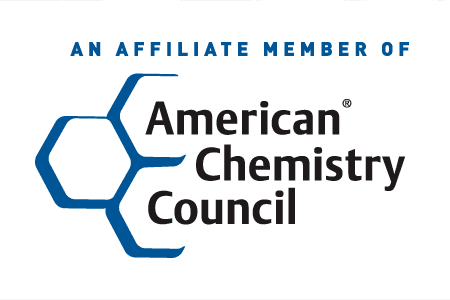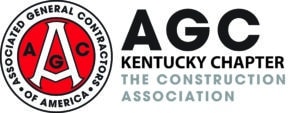By Robert Smith, Fisher Phillips Safety Solutions LLC and George D. Adams, Fisher Phillips LLP
The International Organization for Standardization (ISO), with the help of Safety and Health experts from more than 70 countries, developed ISO 45001. It is intended to help companies significantly reduce workplace injuries and illness, dramatically improve employee productivity and quality, and increase profitability. The ISO 45001 standard represents the new international consensus and certification standard for occupational safety and health and is being called the “gold standard.”
Other companies care; here’s an example.
Some well-known automotive manufacturers recently published requirements for vendors to achieve ISO 45001 certification. For example, BMW Group has added this to its supplier agreement:
“Seller shall at the latest by start of production (SOP), implement, operate and prove to Buyer by presentation of a corresponding certificate, a certified occupational health and safety management system in accordance with “OHSAS 18001” or “ISO 45001” or a recognized and certified occupational health and safety management system derived therefrom.”
The OSHAS 18001 program will expire in March 2021. Thus, BMW Group suppliers who hold 18001 certifications must achieve ISO 45001 certification if they want to continue serving BMW Group. It’s a safe bet those vendors are thinking about ISO 45001. Other vendors who want that work probably are too. Whether you’re being pulled by a customer or want to push yourself, you should understand ISO 45001 and how it could help or hurt you.
What you need to know.
The new standard emphasizes the responsibilities of top levels of management. Under ISO 45001, top management is responsible to create, facilitate, maintain, evaluate, and promote the safety and health management system. This approach is designed to drive safety into a company’s culture and everyday operations. ISO 45001 also requires worker involvement in decision making and evaluation processes. By achieving ISO 45001 certification, companies holding ISO 9001 or ISO 14001 certification will ensure their occupational health and safety management system is aligned and fully integrated with other existing management systems.
What about current ISO, OSHAS, VPP, and other certifications?
Companies holding an ISO 9001 (quality) and ISO 14001 (environmental) certification have a distinct advantage when implementing ISO 45001. The new ISO 45001 standard uses the same Annex SL framework.
Occupational Safety and Health Assessment Series (OSHAS) 18001 is a British standard used in approximately 130 countries. It required a periodic review and updates, from which ISO 45001 was created. OSHAS 18001 expires in 2021. Companies currently operating under OSHAS 18001 should begin migrating to ISO 45001.
Companies operating as an Occupational Safety Health Administration Voluntary Protection Program (OSHA VPP) site also have an advantage in implementing ISO 45001. As a VPP site, top management commitment already exists and the company is already focused on minimizing injuries and illness.
What are the major differences?
Compared to other occupational health & safety management systems, ISO 45001 emphasizes planning, operational support, management and worker participation, performance evaluation, and continuous improvement. ISO 45001 is designed to improve hazard identification and abatement to prevent accidents. It also requires employers to address social factors, such as workload, work hours, victimization, harassment, and bullying, within the safety program. Employers also must identify and address a broader range of hazards, including off-site hazards. The company must identify, understand, and address hazards that may arise from events, infrastructure, equipment, materials, and substances near their facilities, including from neighboring businesses.
ISO 45001 requires collaboration across all departments of an organization. Traditional silos within an organization will likely be diminished. Quality and Environmental departments, for example, will now work closely with Safety as the ISO framework is the same and requires consistency among departments. Human Resources and Safety will work closely to develop, implement, and train employees on policies to address ISO 45001’s social factors, such as harassment, bullying, and victimization. Human Resources also should benefit from ISO 45001’s focus on accident prevention. This should reduce the time devoted to worker’s compensation claims.
What are the benefits?
The benefits of ISO 45001 certification include the positive impact on corporate culture and employee morale, cost savings (fewer accidents, increased productivity, and improved quality), and enhanced public image. It also helps drive process improvements and both internal and external competitiveness. ISO 45001 certification may help expand the customer base or market share. It may even become essential to retain your current customer base as more companies begin requiring suppliers to have ISO 45001 certification.
Achieving ISO 45001 certification takes time. Organizations should allow at least six months for implementation, auditing, and certification—and this is an aggressive timeline. Most organizations should allow nine to fifteen months, depending on resources and other projects in the pipeline.
U.S. based subsidiaries of European and Asian businesses are leading the charge in implementing ISO 45001. BMW Group fits this model, but it is not alone. C-suite executives and upper managers of many U.S. businesses, however, have not even heard of ISO 45001, and many who have learned the hard way—from the corporate office or a customer.
Many requests for proposals may soon require ISO 45001 certification. Executives, plant managers, human resources, and safety personnel should begin educating themselves. An aggressive, competitive internal team can be ready to respond intelligently when the overseas office or a customer comes calling. Even if you cannot achieve certification before then, you can be moving forward and won’t have to say “ISO what?” Achieving ISO 45001 certification before your competitors will improve opportunities for increased revenue. Companies that ignore or delay certification may lose current relationships and opportunities for new business. Fisher Phillips Safety Solutions and the attorneys of Fisher Phillips LLP can assist you.
This article provides an overview of certain legal issues. It is not intended, and cannot be construed, as legal advice for any purpose. For more information, contact a professional at Fisher Phillips Safety Solutions (404-240-4147) or an attorney in Fisher Phillips’ Louisville, Kentucky office (502-561-3990).




